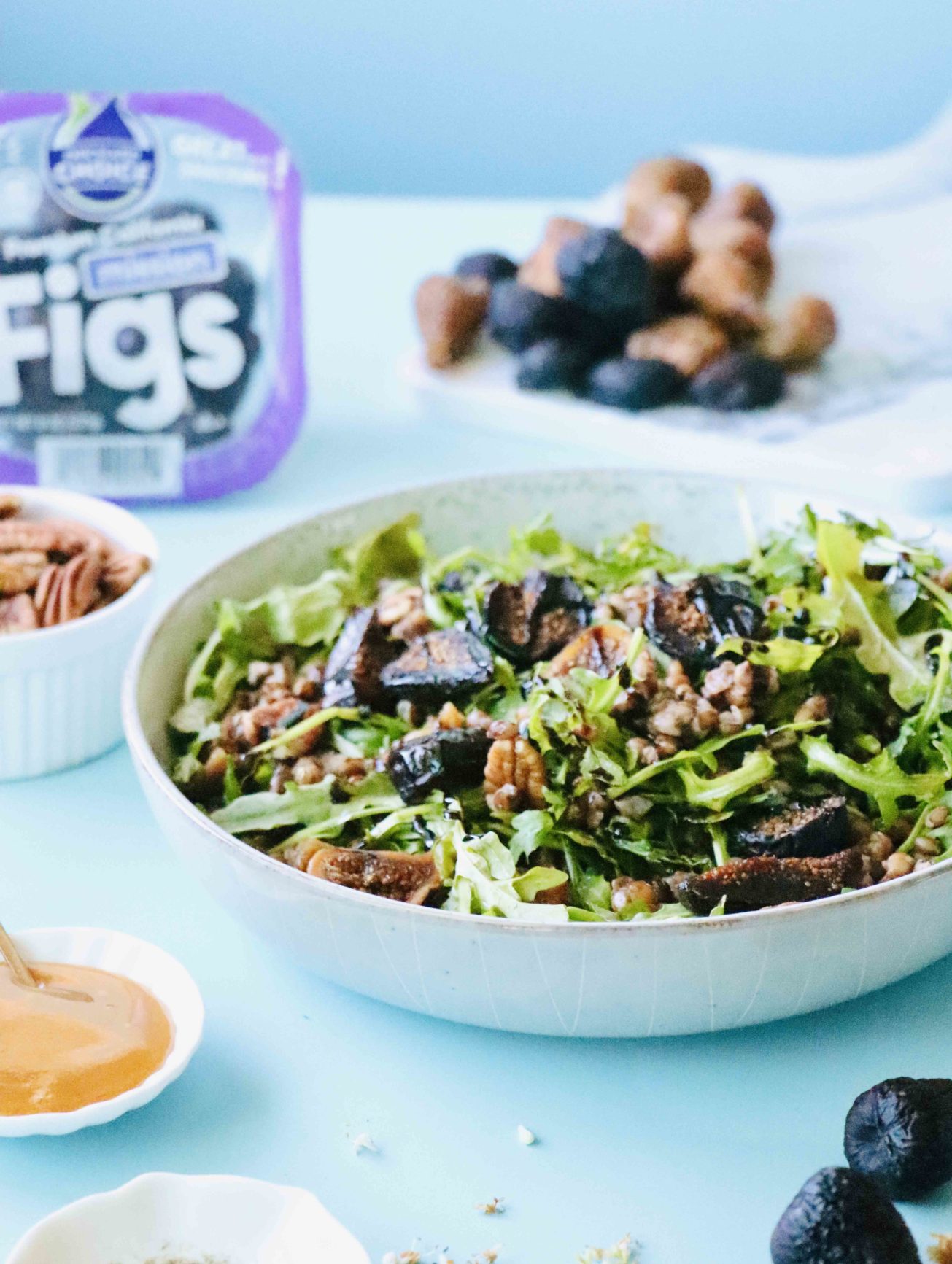Dietary fiber occurs naturally in plants, helps provide a feeling of fullness, and is important in promoting healthy laxation. Fiber that occurs naturally in foods like figs may help reduce the risk of cardiovascular disease, obesity, and type 2 diabetes. Most Americans don’t get enough dietary fiber. Orchard Choice and Sun-Maid California Figs, both dark purple Mission and amber-colored Goldens, are an excellent source of dietary fiber. A small handful, about 3 to 5 figs depending on the variety, provides 5 grams of dietary fiber or 20% of the Daily Value. Ounce-for-ounce dried figs have more dietary fiber than most other common fruits, making figs fiber and figs nutrition a reason to add them to what you eat everyday.
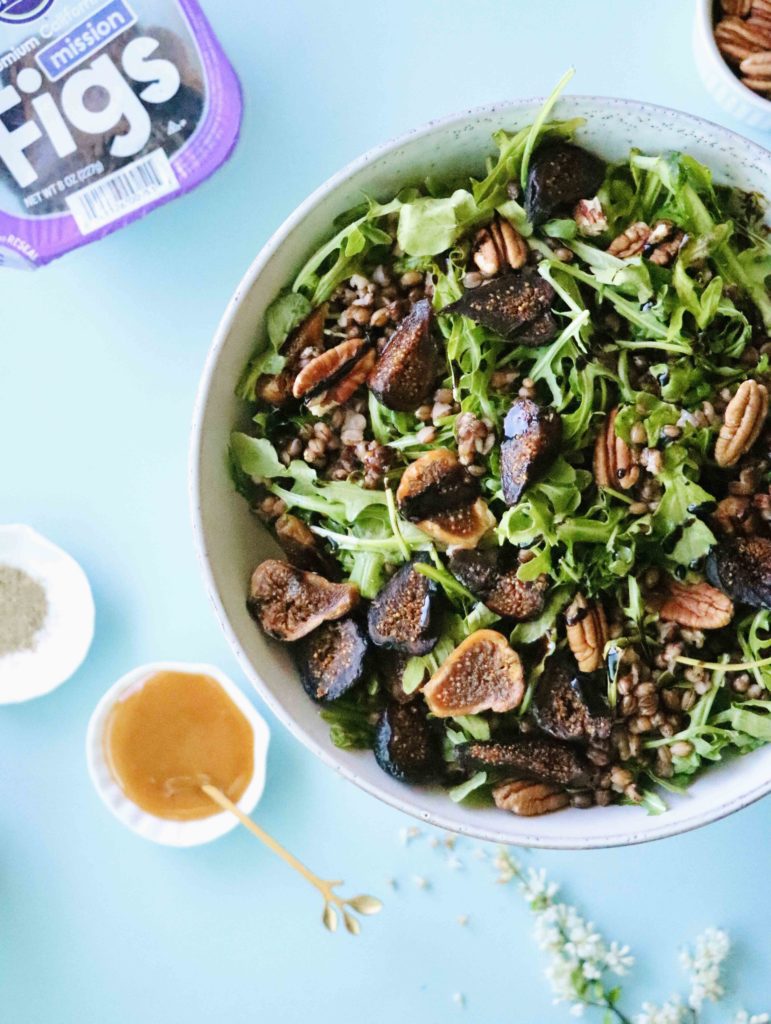
What You Should Know about Figs Nutrition and Fiber
Fiber is a “nutrient to get more of.” In addition to aiding in digestion, fiber has a number of other health-related benefits. These benefits are especially effective when you have a high fiber diet that is also low in saturated fat, cholesterol, trans fat, added sugars, salt and alcohol.
- Eating a diet that is low in saturated fat and cholesterol and high in fruits like figs, vegetables, and grain products that contain some types of dietary fiber, particularly soluble fiber, may help lower your cholesterol and reduce your chances of getting heart disease, a disease associated with many factors.
- Healthful diets that are low in fat and rich in fruits and vegetables that contain fiber may reduce the risk of some types of cancer, including colon cancer, a disease associated with many factors. In addition, such healthful diets are also associated with a reduced risk of type 2 diabetes.
- Fiber also aids in the regularity of bowel movements and preventing constipation. It may help reduce the risk of diverticulosis, a common condition in which small pouches form in the colon wall. This condition often has few or no symptoms; people who already have diverticulosis and do have symptoms often find that increased fiber consumption can reduce these symptoms. It’s also important to note that if the pouches caused by diverticulosis rupture and become infected, it results in a more severe condition called diverticulitis.
Soluble versus Insoluble Fiber: What It Does
Fiber comes in two forms — insoluble and soluble. Most plant foods contain some of each kind.
- Insoluble fiber is mostly found in whole-grain products, fruits and vegetables. It provides “bulk” for stool formation and helps wastes move quickly through your colon. A 40-gram serving of California Dried Figs provides 3.5 grams insoluble fiber.
- Soluble fiber is found in many fruits and vegetables, peas, beans, oat bran, whole grains, barley, cereals, seeds, rice, and some pasta, crackers, and other bakery products. It slows the digestion of carbohydrates, and can help stabilize blood sugar if you have diabetes. In addition, it helps lower “bad cholesterol.” This, in turn, reduces the risk of heart disease. A 40-gram serving of California Dried Fig provides 1.38 grams soluble fiber.
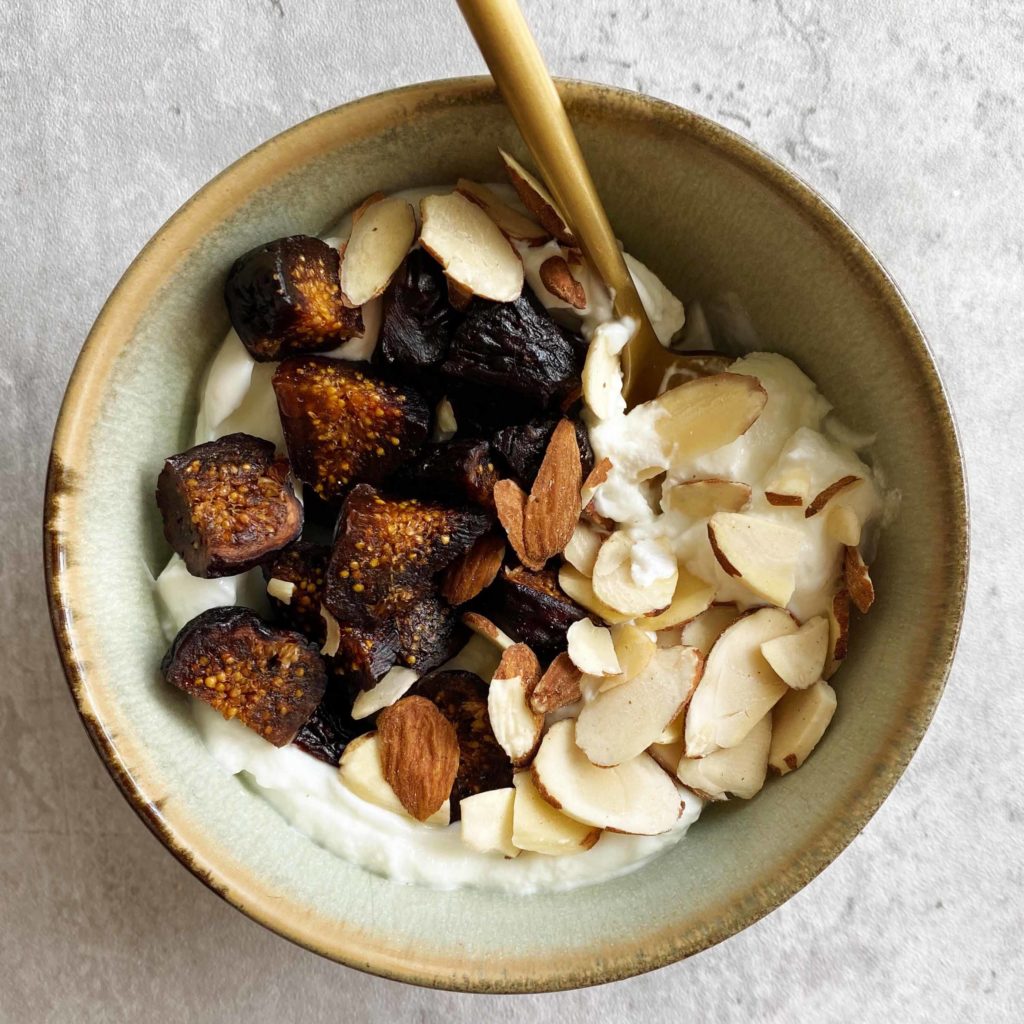
Fiber Recommendations by Age
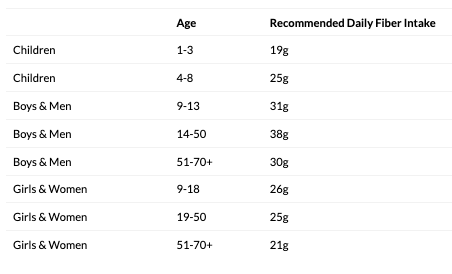
How Much Fiber Do I Need
It is recommended that you get 14 grams of dietary fiber for every 1,000 calories that you consume each day or 25 grams per day for women and 38 grams per day for men. The recommended intake for adults over 50 is 30 grams for men and 21 grams for women per day, due to decreased food consumption. Most Americans greatly under consume dietary fiber, and usual intake averages only 15 grams per day.
Figs Nutrition + Nutrients Provided in Serving Sizes of Common Fruits
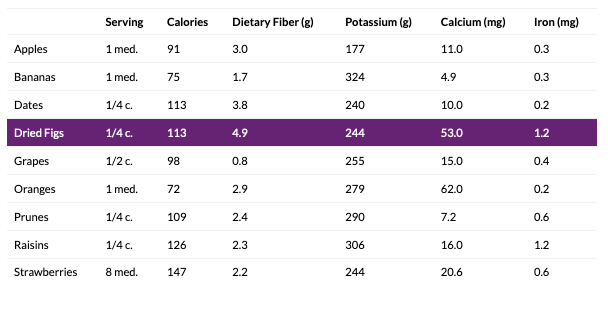
8 Simple Ways to Add Fiber with Figs
1. Take Little Steps
Add fiber gradually to allow time for your digestive system to adapt. Try adding a few grams, about 2-3, of dietary fiber each day, along with drinking more water. Each fig has about 1-1.5 grams of fiber, depending on the size.
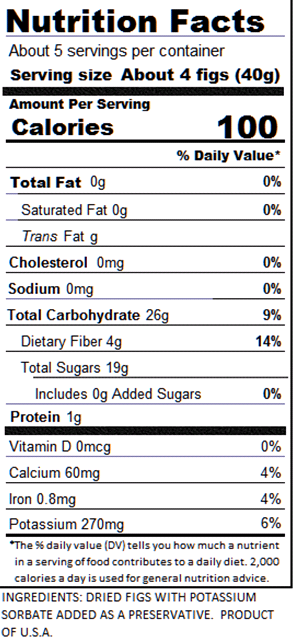
2. Check the Label
Every little bit helps. The best sources of fiber have at least 5 grams of fiber per serving.
The Nutrition Facts panel tells you the amount of dietary fiber in each serving, as well as the %DV of fiber that food contains. Compare foods and choose the ones with higher fiber.
- 5% DV or less is low in fiber
- 10% DV or more is a good source of fiber (2.5 grams per serving)
- 20% DV or more is high in fiber (5 grams/serving)
3. Top It Off
Sprinkle chopped figs on top of cereal, spoon poached figs over frozen yogurt and partake of figs nutrition as a health and flavor boost.
4. Make Snacks Count
Dried fruit and nuts make a portable, easy, healthful way to add fiber to your day. Check out Orchard Choice snack bags at the Growers Store.
5. Keep ‘Em Handy
In your desk drawer, in the gym bag, in the glove compartment, in your backpack, on the counter – reach for figs when you’re hungry.
6. Eat fruits and vegetables instead of drinking juice
Fruits and vegetables have more fiber than their counterpart juice.
7. Add some fiber to every meal
Add diced figs and chopped nuts to cereal or spread fig jam on whole wheat toast; stir some chopped figs into tuna or chicken salad or make a Mediterranean spread and keep in the refrigerator to liven up turkey sandwiches; stir figs into whole grain side dishes, add sliced figs to green and fruit salads to add in the benefits of figs nutrition.
8. Choose recipes with fiber-rich ingredients
Visit our recipe section and enjoy a wide variety of recipes that provide dietary fiber in varying amounts.

